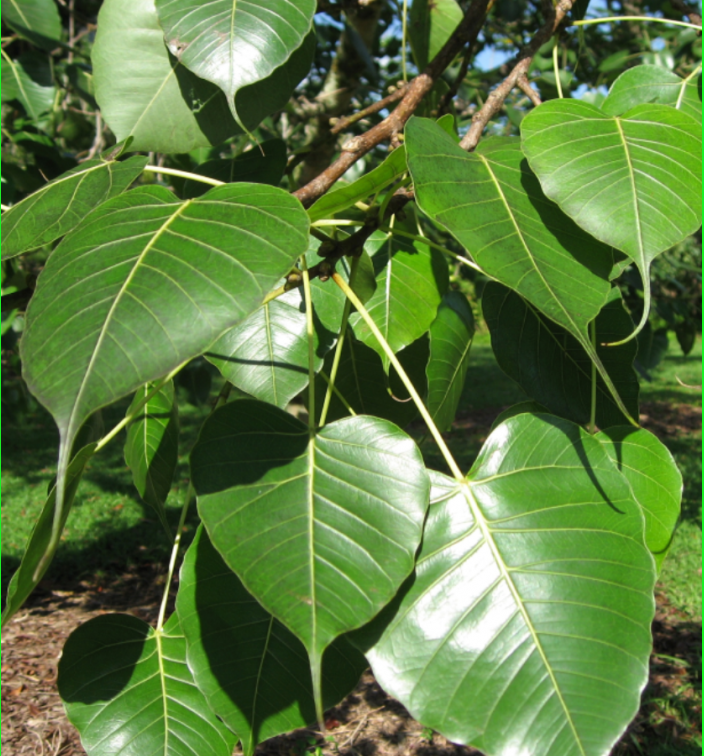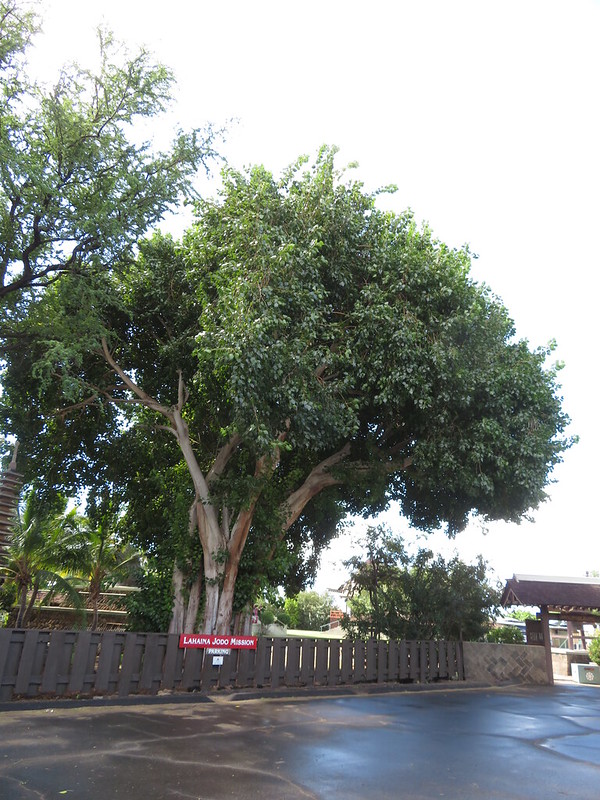
Bo Tree
Ficus religiosa
Species Info General
Family: Moraceae
The bo tree, also called peepul or Bodhi tree, is native to India, Bangladesh, Nepal, Pakistan, Sri Lanka, southwest China and Indochina. According to legend, the Buddha sat beneath a bo tree when he meditated and attained enlightenment. Prior to about 20 years ago, the bo tree was not able to reproduce on its own in Hawai‘i. It needed a specific wasp to pollinate its flowers in order to produce seeds. Entomologists detected the wasp, Blastophaga quadraticeps, in Hawai‘i in 2007. Now, the bo tree is capable of spreading unencumbered in Hawai‘i.



Identification/Description
- Deciduous or semi-deciduous tree that can grow up to 60 to 100 feet tall and 60 to 100 feet wide.
- Trunk can have a diameter of up to 9.8 feet.
- Dark green heart-shaped leaves with a long distinctive tip, looks similar to Milo leaves. Leaves are 4-6 inches long and about 3-4 inches wide with a 2-4 inch stem.
- Produces small green figs 1-1.5 cm in diameter that turns purple when ripe.
Impacts
- Previously spread only by cuttings in Hawai‘i, now able to reproduce by seed following arrival of pollinator wasp.
- Establish dense stands that dramatically alter ecosystems.
- Displaces and shades out native species.
- High longevity and produces billions of seeds during its lifetime.
- Seedlings emerge far from an established tree site: found in stonewalls, cement walkways, storm drains.
